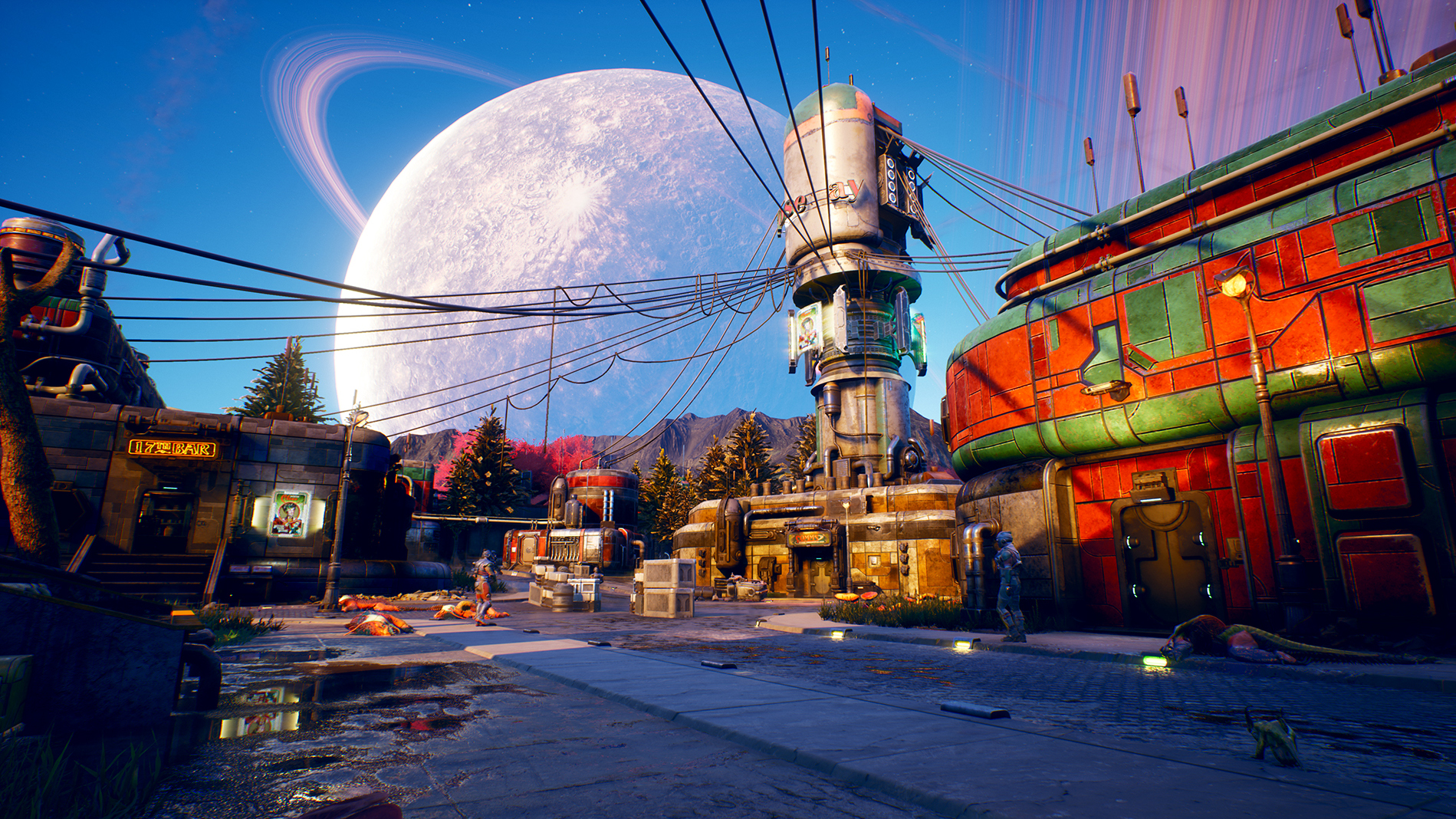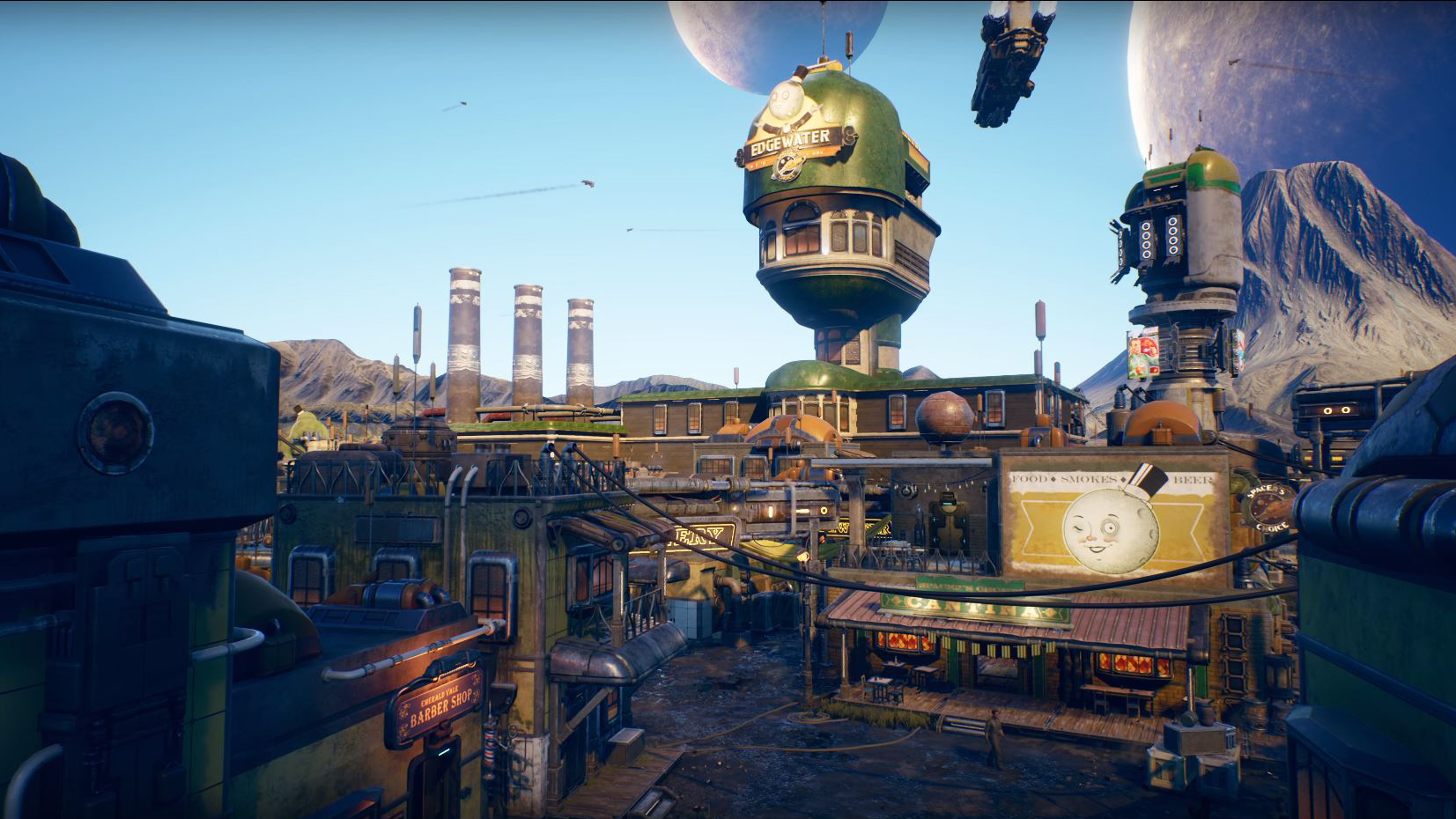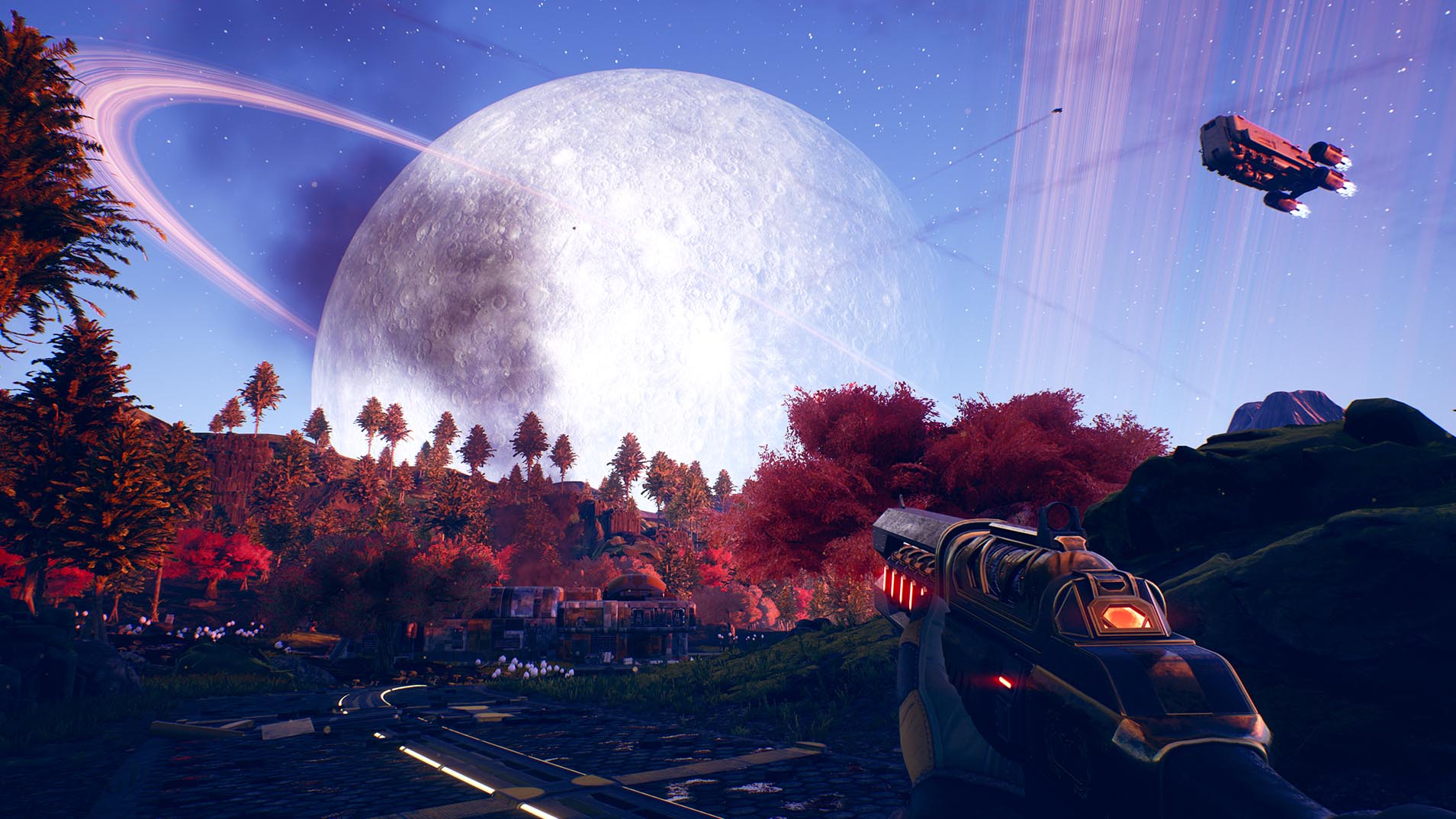How The Outer Worlds escaped the shadow of Fallout, according to its creators
INTERVIEW: 'We just followed our guts'

At first glance you could be forgiven for seeing The Outer Worlds as another wacky space opera, complete with eccentric characters and off-beat humor. But to leave it there would be to belie a game with over 20 years of history behind it.
The team behind The Outer Worlds has worked on some of the most popular RPGs in the world. Producers Tim Cain and Leonard Boyarsky are credited with the creation of the prestigious Fallout franchise, with Cain working as creator, producer, and lead programmer, and Boyarsky serving as the lead artist responsible for Fallout’s signature 1950's style, in addition to helping oversee the game’s overall direction.
Yet despite being billed by Boyarsky himself as the spiritual successor to Fallout, specifically Obsidian Entertainment’s last entry in the series, the much-loved Fallout: New Vegas, The Outer Worlds is most definitely its own mad-cap experience. We spoke to Cain and Boyarsky to find out more, and get a feel for just how zany a space-romp The Outer Worlds is.
Space colonialism and jet-fuelled industrialists

From their description of The Outer Worlds alone, it’s clear Cain and Boyarksy haven't dialled down on their signature humor and out-of-this-world perspective on what makes a great RPG.
“It takes place in one of the furthest colonies that humanity has settled, in an alternate future where corporations were never broken up in the early 20th century,” explains Boyarksy. “The robber barons of that era continued to expand and began to take over people's lives. The colony that the game takes place in is completely run by these corporations.”
The Outer Worlds begins as the spaceship transporting the player to the colony has veered off course and been lost for 70 years, with a scientist thawing them out to save their fellow colonists and ultimately overthrow the corporate board running the world they’re set to land on.
"We had to check and ask ourselves if this felt too much like a follow-up"
Leonard Boyarsky – Creative Director
The premise is wild enough on its own, but when pressed on how they came up with this hyper-industrialist universe, Boyarsky explains the team began riffing on the role of corporations and it fell into place from there.
Sign up for breaking news, reviews, opinion, top tech deals, and more.
“We started working backwards and figuring out where the world might have diverged,” Boyarsky told TechRadar. “We love pulp sci-fi and at first were thinking around the early 20s with Einstein's theory of relativity, but then we realized that if we're extrapolating and expanding upon the idea of robber barons.”
Despite the uniquely bonkers plot, Boyarsky comments that Obsidian suffered from the opposite problem that plagues many studios when creating a spiritual successor, in that they were concerned with how they could make the game different enough from the work they were trying to evoke, rather than similar.
“When we made Fallout, no one was dictating to us, we had full creative control, we just followed our guts,” Boyarksy explains. “And so in making this game, because it's science fiction, because it's first-person, and because of our sense of humor, we had to check and ask ourselves if this felt too much like a follow-up. Again, we’re just following our instincts here. That's kind of who we are. That's how we come up with ideas for how to build these worlds.”
Space-crafting a true RPG

When it comes to the actual gameplay, though, fans of Obsidian RPGs will definitely feel some similarities, with all the core roleplaying mechanics you’d expect.
“I think when we put it together, there were certain things we just assumed were there – the core RPG elements,” explains Cain. “In fact, one of our pillars when it came to the game design was that we really wanted to be true to a traditional Obsidian RPG. This meant that in addition to characters and story, we had to have mechanics to support our rich character creation, a bunch of different playstyles, advancement, skills and perks, and our new thing which is ‘flaws’, so they player can play the game how they want.”
In addition to the traditional stealth, combat and dialogue options for dealing with your extra-terrestrial troubles, The Outer Worlds also allows you to adopt the role of ‘leader’, making use of the skills of the companions you meet along your journey.
The rich backstories of the companions you could share your journey with in New Vegas, and the stark contrasts between them, were one of the most beloved parts of the game. In The Outer Worlds you can double up and have two friends alongside you. Cain and Boyarsky were excited about the potential for both humor and plot exposition this move creates. There are six possible companions who all interact with each other, as well as the player’s actions, in different ways.
"We’ve been hardcore RPG evangelists for more than 20 years now, and we feel there’s a really special experience to playing a game that reacts to your choices"
Leonard Boyarsky – Creative Director
“There's an exchange that I love between a character you pick up on a planet that no longer serves the corporations and one that’s worked for them all their life,” comments Boyarsky. “They’re talking about working hours with one saying ‘Wow, I've heard you guys have to work 16 hour days’, and the other replies, 'Yeah, we get eight hours off, but not always in a row’.”
When it comes down to it though, you’re bound to end up having to shoot (or whack) your way out of at least a few problems in a world like this, meaning there has to be an emphasis on combat. Tactical Time Dilation, or T.T.D., is functionally very similar to V.A.T.S in the 3D Fallout titles, and it serves a similar purpose of helping make the game’s combat more accessible to players of all skill levels.
“We really wanted something to let players who weren't Twitch pros - or who didn't want a fast action game - to slow down the combat and really be more strategic. But we found even players who are good shooters like to use it,” comments Boyarsky. “Y’know, we’ve been hardcore RPG evangelists for more than 20 years now, and we feel there’s a really special experience to playing a game that reacts to your choices and wanted to focus on creating a narrative around that. We wanted fast-paced action, but we didn't want there to be a wall of numbers you had to get past to reach that.”
The Outer Worlds might not be a game with a world the size of Fallout 4, or even New Vegas, but it seems Obsidian has placed a huge emphasis on crafting an experience filled to the brim with as much flavor, character and zest as possible.
- Best games 2019: our favorite PC and console games of the year
- Check out our picks of the best PS4 games